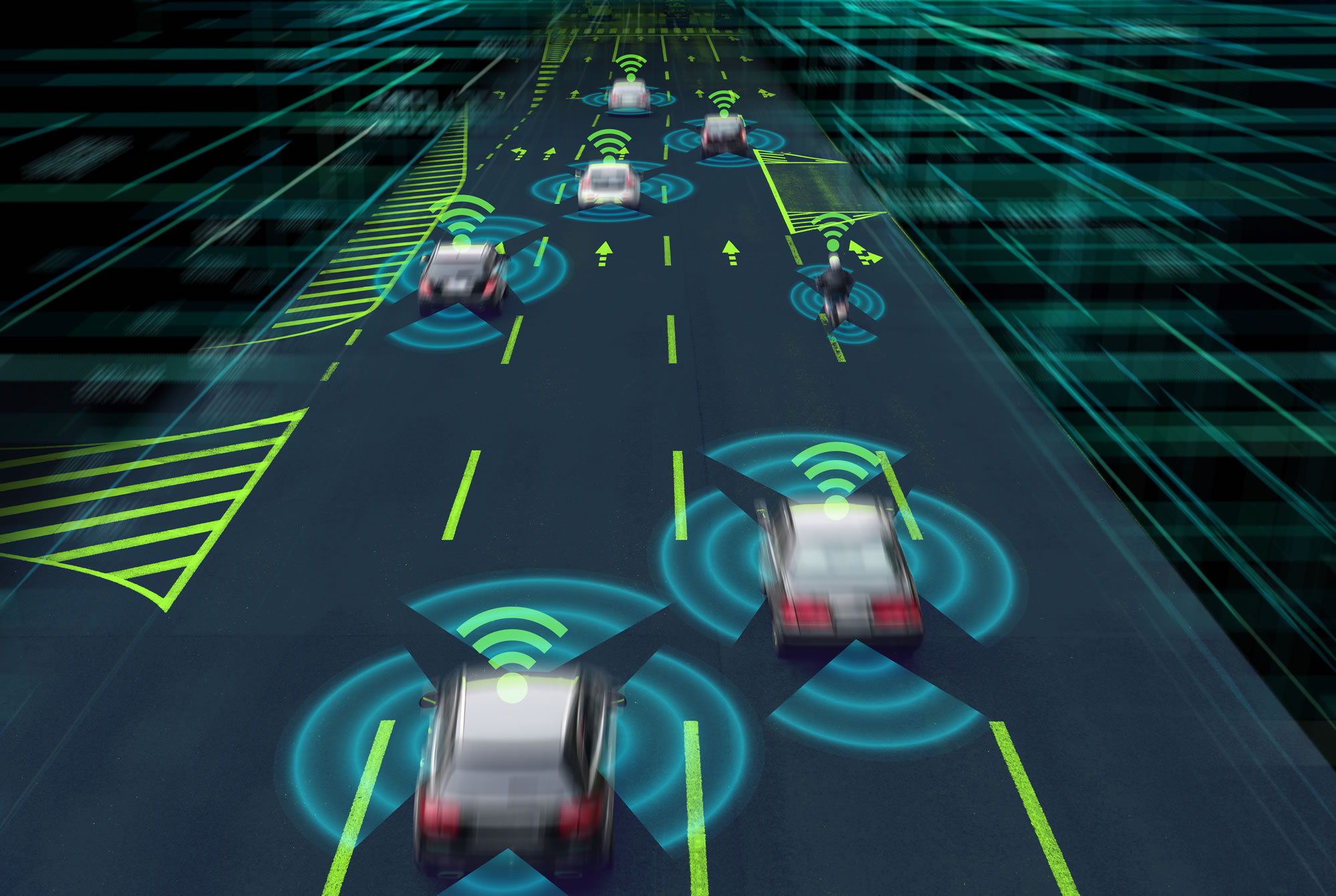Vehicle-to-vehicle communication (V2V communication) is making headlines in the car technology realm. Along with self-driving technology and advanced infotainment systems, V2V communication is meant to save lives. It was created to curb driver error, lack of attention, failure to look around and bad judgment. The National Highway Traffic Safety Administration (NHTSA) has stated that 81% of multi-vehicle accidents could be addressed by V2V.
How V2V Communication Prevents Accidents
Imagine you are driving down the street when you come to a red light. After you start slowing down, the light turns green and you begin to speed up again. All of a sudden your seat begins to vibrate and a warning signal flashes in front of you. The V2V communication system is telling you to stop. A car speeds through a red light in front of you and you narrowly avoid a serious T-bone accident.
None of the current safety aids would offer any help in avoiding such a dangerous crash. “V2V can also warn you about oncoming traffic you might not have noticed when you signal that you’re making a left turn,” says Bezzina of the NHTSA.
What is V2V Communication?
According to Gizmodo, the US Government started testing V2V communication in Ann Arbor in 2012 by installing sensors on 3,000 vehicles. These sensors send out signals over a wireless spectrum band and also receive them from other cars, creating a network of communicating sensors that ping when there’s danger, whether it’s one car edging out of its lane without signalling, or a driver breaking without warning. An additional form of technology, vehicle-to-infrastructure, communicates with stop signs, traffic lights, and other pieces of road infrastructure.
V2V Communication Isn’t Foolproof
While V2V communication will drastically reduce collisions, it could actually prove to be more distracting than helpful. Like other driving aids, V2V warnings include alarms and flashing lights, which could prevent a driver from watching the road.
V2V communication is supposed to be secure and anonymous. Let’s pretend it’s not unhackable, If your car shares its speed and it’s tracked by police, that could mean you’re vulnerable to speeding tickets.
According to TechRadar, some are worried about cars malfunctioning or misjudging a situation that a human driver would be able to handle easily. While it is unlikely that this would happen, the possibility will always be there.
For more information
- Potholes abound on the road to car-to-car communication, Ars Technica
- How vehicle-to-vehicle communication could save (and endanger) lives, TechRadar
- 10,000 NYC Vehicles Are Going To Test the Government’s Connected Car Tech, Gizmodo







